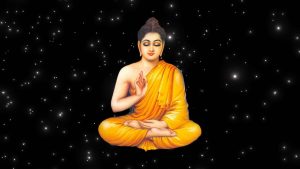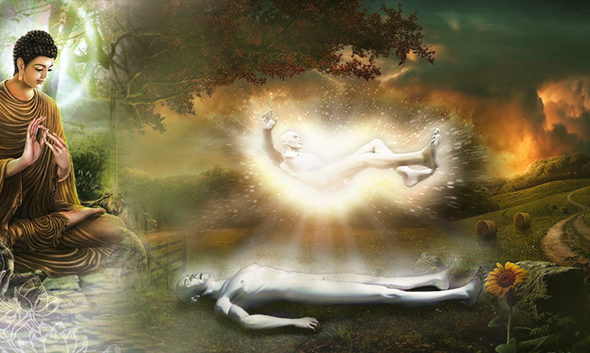📖 The book The Buddha Teaches Once More
🔹 Part 2: Essential Buddhist Teachings
📜 Chapter 21: The Four Noble Truths
The Four Noble Truths are the first and most essential discourse of the Buddha, unveiling a profound insight into the true nature of existence. Minh Nguyet respectfully invites all to listen as the Venerable Buddha expounds upon the Four Noble Truths, guiding us toward a deeper understanding of worldly reality and the path to the cessation of suffering, leading to liberation.

The Four Noble Truths, also known as the Four Holy Truths, were the first teaching introduced by the Buddha in His Discourse on the Turning of the Dharma Wheel (Dhammacakkappavattana Sutta) at Deer Park, following His enlightenment.
This discourse contains indispensable wisdom that every Buddhist must know and comprehend. Without a proper understanding of these truths, one cannot be considered a true Buddhist, and instead, may easily fall into the path of blind faith and superstition.
Indeed, when we deeply grasp the profound essence of the Four Noble Truths, we will come to realize that merely chanting “Namo Amitābha Buddha” with the hope of being reborn in the Western Pure Land is also a form of blind faith.
The Meaning of the Four Noble Truths
The Four Noble Truths is rendered into Vietnamese as “Tứ Diệu Đế”. To fully understand the Four Noble Truths, we need to analyze the meaning of the words ‘Diệu’ and ‘Đế’ in the Vietnamese term:
- The word “Tứ” means four.
- The word “Diệu” means wondrous or sublime, referring to the profound transformation that occurs through understanding and changing one’s thoughts toward wisdom, thereby eliminating suffering. Though it seems simple, it is not simple at all.
- The word “Đế” means fundamental, referring to the core principles in Buddhism.
Therefore, the Four Noble Truths that the Buddha taught have the following meanings:
Dukkha (Khổ Đế) – The Truth of Suffering
The fundamental nature of the world is suffering, implying that everyone must endure suffering. Life is filled with suffering, from birth, aging, illness, and death to both physical and mental pain.
Suffering is not limited to physical pain but also includes dissatisfaction, disappointment, and emotional suffering. Feelings of greed, hatred, and ignorance are major sources of suffering. We seek happiness, but even when we achieve it, the fear of losing it continues to bring suffering.
🔹 The Truth of Suffering (Dukkha): Recognizing that life is suffering, from birth, aging, illness, and death, to the feelings of pain caused by greed, hatred, and ignorance. Suffering is not only physical pain but also includes dissatisfaction, disappointment, and emotional suffering.
Samudaya (Tập Đế) – The Truth of the Cause of Suffering
Samudaya represents the cause of suffering, as well as the accumulation of suffering over multiple lifetimes. The word “Tập” means accumulation, indicating that suffering arises not only from the present moment but also from past lives and past actions.
Human beings naturally crave and desire:
✔ The need for food, comfort, and security to satisfy the body.
✔ The desire for love, power, and wealth to satisfy the mind.
These desires, if unchecked, lead to clinging and attachment, which result in suffering and keep beings trapped in karmic cycles for countless lifetimes.
🔹 The Truth of the Cause of Suffering (Samudaya): Identifying the cause of suffering as attachment and ignorance accumulated over many lifetimes. These are the deep-rooted causes that trap people in the cycle of birth and death, continually creating karma and enduring suffering.
Nirodha (Diệt Đế) – The Truth of the End of Suffering
The cessation of suffering is attainable when attachment, ignorance, and negative tendencies of the mind are eliminated. When the roots of suffering are removed, suffering will naturally come to an end.
One may still endure physical pain, but if the mind remains at peace, suffering does not exist. Only when the suffering within the mind ceases can one truly attain liberation. This state is known as Nirvana, where beings are freed from all attachments and the cycle of rebirth.
🔹 The Truth of the End of Suffering (Nirodha): Understanding that suffering can end by eliminating attachment, ignorance, and negative tendencies of the mind. When these roots are eradicated, suffering will cease.
Magga (Đạo Đế) – The Truth of the Path to the End of Suffering
To eliminate suffering, one must follow a method or path that leads to its cessation. This path is known as The Noble Eightfold Path, the key to overcoming suffering and attaining liberation.
The Eightfold Path consists of:
- Right View – Understanding the true nature of existence.
- Right Thought – Thinking free from greed, hatred, and delusion.
- Right Speech – Speaking truthfully and avoiding harmful speech.
- Right Action – Acting ethically and refraining from harmful deeds.
- Right Livelihood – Earning a living in a way that does not harm others.
- Right Effort – Persistently cultivating positive mental qualities.
- Right Mindfulness – Maintaining awareness of thoughts, emotions, and actions.
- Right Concentration – Developing deep focus through meditation.
🔹 The Truth of the Path to the End of Suffering (Magga): The Noble Eightfold Path is the method that helps us end suffering, attain peace, and reach liberation.
It is essential to remember that the way to end suffering is through the Noble Eightfold Path. By deeply understanding and applying the Four Noble Truths, one can break free from suffering and attain true liberation.
When we fully grasp the essence of these truths, we realize that merely chanting prayers and hoping for a better rebirth is not enough. True transformation comes from practicing wisdom, ethical conduct, and meditation as guided by the Noble Eightfold Path.
By integrating these truths into our daily lives, we cultivate a path of mindfulness, wisdom, and liberation, moving closer to the ultimate goal—enlightenment.
Why is the nature of the world suffering?
The nature of the world is suffering because the Supreme God always desires for us to mature and return to the Infinite Realm.
Therefore, He does not allow us to indulge excessively, as overindulgence can easily lead to corruption. For example, a wealthy person who only focuses on pleasure will not understand the value of money. Living without struggling, without facing challenges, and without overcoming difficulties, a person cannot grow.
Thus, He grants us more hardships than fortune. These hardships help us become wiser and accumulate merits by overcoming challenges. Adversity also leads people to seek out spiritual paths, bringing peace to the mind and body, and creating a connection with the Dharma. This encourages them to practice diligently, instead of remaining endlessly engrossed in the worldly attractions of human life.
In summary, the Four Noble Truths stand as one of the most essential teachings of the Buddha, offering a profound understanding of the nature of suffering and the path to liberation. The Buddha revealed that suffering is an inevitable part of life—not only caused by fundamental needs such as food and shelter but also by desires, attachments, and aversions accumulated over countless lifetimes.
To transcend suffering, the Buddha and the Four Noble Truths emphasize the importance of self-cultivation through the Noble Eightfold Path. This path serves as the ultimate guide to achieving inner peace, wisdom, and enlightenment, leading practitioners toward true liberation from the cycle of rebirth.




